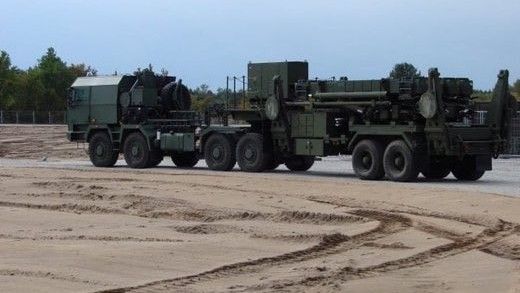Industry
Wisła System Integration Launched

Polish Ministry of Defence announced that a process has been launched in September, at the Aerospace Technology Workshop in Toruń [Warsztaty Techniki Lotniczej], aimed at checking and integrating the elements of the Polish Wisla long-range air/missile defence system.
The release issued by the Polish Ministry of Defence states that Polish and US teams involved in the System Integration Checkout (SICO) procedure are running an inventory and conducting the final equipment assembly, also working on the first start up and tests, all aimed at verifying the correctness of operation of the Wisła system. This has major relevance in the process of handing off and commissioning of the system in the Polish Armed Forces. Successful completion of the procedure is a requirement that needs to be met before the system is handed off to the Polish air/missile defence elements.
The Polish Ministry of Defence announced that all of the delivered elements would be checked. This includes the AN/MPQ-65 radars, EPP field power plants, ECS/RIU cabins (Engagement Control Station/Radar Interface Unit), M903A2 launchers, PAC-3MSE missiles, launch containers for the training missiles, cryptography equipment, Jelcz CSS 8x8 special tractors, Jelcz TS EPP (Electrical Power Plant) special purpose trucks, Jelcz TS LRPT (Large Repair Parts Transporter) vehicles, and Jelcz GMT transporters, along the S-280 command stations, or IFCN radio relays. As for now, the process is scheduled to be finalized in the second quarter of 2023.
SICO is a process that has been divided into 3 separate stages. The first stage would involve an integration of the M903A2 launcher of the Patriot system with the remaining components of the system, and this stage would take place in Toruń. The tests related to the IBCS integrated command system for air/missile defence are scheduled to happen at the subsequent stage, at the 37th Air Defence Missile Squadron in Sochaczew. Finally, a final Patriot/IBCS system checkout would take place, and this, yet again, is scheduled to take place at the WTL facility in Toruń.
MSPO 2022: Wisła Command System Complete Now. Polish Industry Inks a Critical Contract
The IBCS (Integrated Battle Command System) has been developed primarily for managing IADS. It allows for the fusion of information across multiple sources and sensors, thus also making it possible to offer the most effective weapon to eliminate the given threat - according to the "every sensor, best shooter" principle. IBCS may also be useful in the process of integrating the F-35 platform in the Polish Armed Forces, procured as a part of the "Harpia" programme. That would mean that the aircraft could also be used as a sensor, transmitting targetting data on threats not detected by GBAD sensors.
Poland is the first buyer of the IBCS system outside of the US, and it is fairly important to use this opportunity. Numerous successful tests and demonstrations have confirmed that the IBCS's capabilities step beyond the realm of needs of IADS alone. One should also stress the fact that experiences and conclusions drawn from the Wisla Phase I SICO procedure would translate into an enhancement of future system integration processes for phase II of the Wisła programme, and within the framework of the Narew, or Pilica+ procurement processes. Furthermore, the release states that the WTL facility in Toruń would ultimately become the primary military maintenance hub for the Polish air/missile defence systems.
The establishment of the Polish Integrated Air/Missile Defence system, across all layers, launched based on the Wisła programme the implementation of which began in March 2018, and on the framework agreement related to the Narew system, signed in September last year, can be viewed as a high priority programme in the process of Technical Modernization of the Polish Armed Forces. Not only would the finalization of the aforesaid programmes, and procurement of relevant equipment for the Polish Armed Forces bring in capabilities that can be used to respond to current and future threats, but it would also translate into heightened levels of interoperability with other NATO allies, the US Army in particular.
